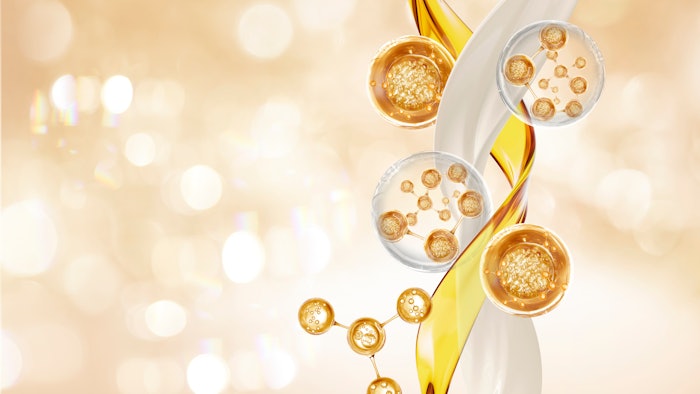
A few years ago, stem cells and epidermal growth factors became hero ingredients in skin care formulations. Some brands claim that plant-based stem cells can help reproduce human stem cells and growth factors, directly changing the behavior of human DNA. I want to illuminate a few facts on stem cells in skin care products.
My methods have always been to work with the body's chemistry, and it has long been my contention that the cells of the body are not programmed to die easily. They are programmed to stay alive as long as possible, given the proper maintenance and environmental surroundings. True skin revision is based on the principles of the skin's biochemistry.
Remove, Rebuild, Protect, Maintain
Our steadfast concept is RRPM:
Remove the redundant cuticle on the epidermis, and other toxins and effluvia that slow down or block natural respiration and new cell proliferation.
Rebuild by offering the new, unencumbered baby cells the food they need to stay alive longer, e.g., essential amino acids, essential fatty acids and proteins.
Protect and guard against free radicals, which can lead to lipofuscin, glycosylation and DNA damage from solar elastosis.
Maintain refers to clients’ at-home maintenance. Follow-up home prescriptives must be a match for the client’s own genetic cell structures and biochemistry. No two people are exactly alike, and we have to factor in stress levels, age, ethnicity and hormonal cascades.
Stem Cells’ Role in Skin
Let's start by clarifying the roles that stem cells and growth factors play in regenerating skin. There are two main types of stem cells. Embryonic stem cells (ES) are the type that build the human body in the womb and can become any cell. Adult stem cells can generate different cell types for their specific tissue or organ. Other subtypes, such as induced pluripotent stem cells (PCSs), are lab-produced by re-programming adult cells to express ES characteristics. All stem cells in the body are interconnected, but organ-specific, fitting together like a giant puzzle.
Growth factors are proteins that regulate cellular growth, proliferation, and differentiation under controlled conditions, maintaining healthy skin structure and replacing cells as they age and die off. Growth factors are secreted by all cell types that make up the epidermis (the outer layer of skin) and dermis (the layer of skin between the epidermis and subcutaneous tissue), including keratinocytes, fibroblasts and melanocytes.
Growth factors are naturally occurring regulatory molecules. They stimulate cell and tissue function by changing their biochemical activity and influencing cell differentiation. Certain types of beta-glucans exist in this class, regulating the proliferation rate and enhancing dendrite strength in the Langerhans cells. This action changes macrophages at the end of each dendrite into a weapon of destruction against free radicals, bacterial attacks, viruses and even parasitic invasion.
Medical stem cell implantation can be performed to back up the stem cells, though immune system rejection is possible. So far, there have been many successes in aspirating fresh stem cells from the hip bones and re-injecting them into injured areas such as a torn meniscus. These mesenchymal stem cells can develop into distinct mesenchymal tissue such as bone, tendons, muscles, adipose tissue cartilage, nerve tissue, blood and blood cells. However, this invasive, complex procedure is a far cry from the mechanisms of creams, serums and other skin care formulations.
Related: Plant Stem Cell Technology 101
Stem Cell Skin Care
The most common question I receive about stem cell formulations is how the plant stem cells in a cream or gel serum work with our human stem cells. The answer is… they don't.
Plant stem cells are harvested when technicians scratch cultured plant tissue to inflict miniature wounds. This damage stimulates the plant's stem cells to react, inducing the formation of new cells on the wounded surfaces. Slow replication and division create a large accumulation of colorless cells called 'callous.' Cells composing the callous divide into cells that do not carry the specific features of individuated plant cells. This callous is usually used as the main ingredient in facial plant stem cell creams.
The issue with this method? Plant stem cells have nothing to do with the human genetic blueprint, so plant totipotent stem cells cannot produce substances capable of directly affecting human stem cells. Only live pluripotent (human) downstream differentiated stem cells possess the biochemical machinery required to produce the myriad of regenerative activities in the human body, including the skin. Even if plant stem cells did have the power to kick-start cells biologically and could somehow remain alive in a formulation, research has concluded that they are too large to penetrate the lipid barrier of the epidermis.
Some argue that these plant stem cell extracts have many micronutrients that benefit the skin. Stem cells derived from plants included in extracts that have pharmaceutical or other value (e.g., quinine, digitalis, aloe vera, etc.) would not be active ingredients—although the other botanical micronutrients may very well be! This is no more true than in other plant aspects, including roots, leaves, buds, flowers and fruit. Even plant material known as beneficial to the skin can only benefit cells depending on where the plant is grown, how it is prepared for extraction, how it is processed into a product with bio-availability, and the delivery system into the skin. Think of these methods as "skin food," not stem cell therapy.
The Future of Stem Cells
There is hope in stem cell research for total skin revision, however. Remember that we call upon stem cells to complete the healing process during aggressive exfoliation. However, this usually is not very well controlled or targeted, and the healing can be spotty or focused only on areas of the epidermis where trauma is the most virulent.
Directly using our skin stem cells, which we have a rich supply of (although the amount decreases slowly with time), requires the following steps:
- Getting to our stem cells with minimum inflammatory response (although some activation is needed).
- Getting the stem cells out of their "house" and on a genetic pathway to another "house" in the skin, such as a keratinocyte or a fibroblast cell. We call this getting past mitotic shock.
- Maintain the cell differentiation over at least 47 days until fresh epidermal tissue is maximized.
I am deeply involved in epidermal stem cell research; it can feel like looking out into an abyss at first. There are so many microscopic variables. After months of study, I had an overnight epiphany about how stem cells develop, and how we could stimulate stem cell growth inherent in the body and then carefully guide those new stem cells to develop into skin that functions at its highest capacity. I recruited an international team of doctors, botanists and biochemists to take a leap of faith on a project like this with no commercial aspect other than to see if it can be done.
This research led to the release of a treatment that uses key active botanical ingredients, alkaline therapy, and enzyme therapy to birth new stem cells and shepherd them to their destiny of creating healthy, beautiful skin.
Know the Facts
If you are interested in stem cell therapy as an esthetician or dermatologist, it is vital to know the facts, so I leave you with some essential terms to kick off your research. These terms make up the tip of a vast iceberg. Still, I encourage everyone to arm themselves with the available, yet ever-changing knowledge of stem cells. In turn, you can spot inaccurate treatments a mile away. You may be able to put two and two together and come up with an answer nobody else has thought of yet! The field is wide open. With stem cells, the possibilities are endless.
Danné Montague-King is the visionary leader behind DMK. He represents over 50 years of scientific research, formulary breakthroughs (such as the original Enzyme Masque), skin healing, education, and support of estheticians worldwide. He is committed to improving scientific understanding of the skin and assisting estheticians to level up their clinics and provide visible, lasting results to clients everywhere.











